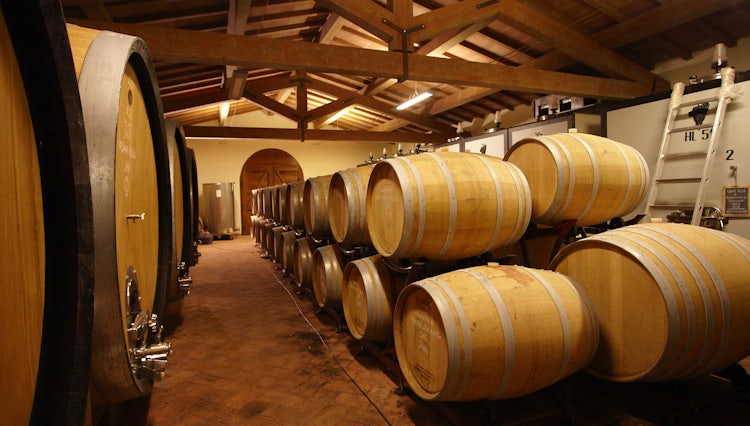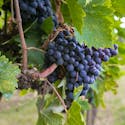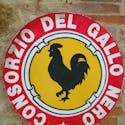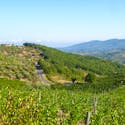The official "Strada del Vino" or wine road to explore the wines & foods of the area
One of the absolute best things about travelling Tuscany is to indulge in the delicious flavours of the region, and better yet getting local, and savoring the genuine recipes and products. Much like the area of Chianti which is a name given to a wine producing zone, the name Maremma also designates an area which is not bound by province, commune or even the region.

It covers a wide stretch of land including much of south-western Tuscany and part of northern Lazio and is held together by traditions and historic events. The vast territory, over 5000 km², roughly corresponds to:
- Grosseto
- Colline Metallifere
- Monte Amiata
- Piombino
- Cecina Lazio as far as Civitavecchia
Characterized by its unique landscape of low hills, fertile land, the Maremma is famous for its wide selection of “mare e monti” - “surf & turf”; the cuisine distinguishes itself in both meat, cheese and seafood. A land close to the coast, yet featuring lots of opportunities for wild game, mushrooms and olive oil. Below we have listed a few of the specialities, both wine and savory recipes, that should be on your radar as you travel through the Maremma area.
Starting with the Wine
The “Strada del Vino e dei Sapori” (an itinerary for traditional wine and food) for the Maremma area is divided into three very distinct geographical areas: Monteregio di Massa Marittima, Montecucco and Flavors of the Amiata and, the subject of this article, the Colli di Maremma (the Hills of the Maremma).
When we refer to the wines from the Colli di Maremma, the hills of the Maremma, we refer to an area that is comprised of 13 government areas: Campagnatico, Capalbio, Grosseto, Isola del Giglio, Magliano in Toscana, Manciano, Monte Argentario, Orbetello, Pitigliano, Roccalbegna, Scansano, Semproniano. Along this “road” you will find the Morellino di Scansano D.O.C.G. wine and Ansonica dell'Argentario D.O.C., Bianco di Pitigliano D.O.C., Capalbio D.O.C., Parrina D.O.C. and Sovana D.O.C.
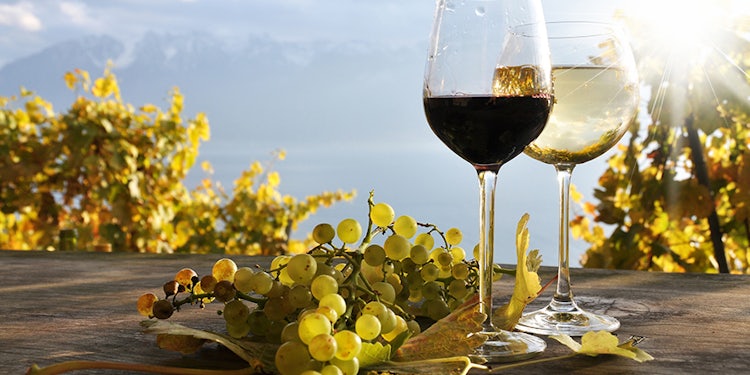
Morellino di Scansano D.O.C.G.
Perhaps one of the more internationally known wines, recognized as a DOC (since 1978) and DOCG (since 2007), is Morellino di Scansano. The name refers to the city in the province of Grosseto, whereas Morellino is the local name for the Sangiovese grape variety.
The climate is a key factor and with the sea being so close, the climate is typically Mediterranean meaning hot and sunny summers to ripen the grapes and autumn/spring offers abundant rain. It is a fruity, fresh ad crisp wine considered to be smooth with little tannins, which translates to finding it available on the market in sometimes less than a year after the “vendemmia”. The Morellino di Scansano Riserva is aged for at least one year in wood and can be released two years after the harvest.
In general, Morellino di Scansano is a red, fruity wine, characterised by a medium body and pleasant balance on the palate with a long finish. Due to its structure and balance it is very versatile when it comes to wine and food matching and always offer a finely defined character.
Bianco Pitigliano D.O.C.
The production area of the DOC Bianco di Pitigliano reaches from Lake Bolsena, in the province of Lazio to Pitigliano, in the province of Grosseto. The “terroir “is characterized by the abundant presence of "tufa" from volcanic eruptions. The final product is a complex combination of several types of grapes: Trebbiano Toscano, locally called Procanico (50-80%), Greco (called Grechetto), Malvasia Bianca Toscana or Verdello (minimum 20%), Chardonnay, Sauvignon, Pinot Bianco and Riesling Italico (maximum 30%).
It is a wine to be drank young, often suggested within one year of the harvest. The color is a straw yellow with greenish reflections. The flavor is delicate, fresh and clean perfume; soft and dry flavor with a distinctive aftertaste, some say it is even a little bitter. This wine is often served with appetizers, light foods, and dishes which are simple in their construction and flavors.
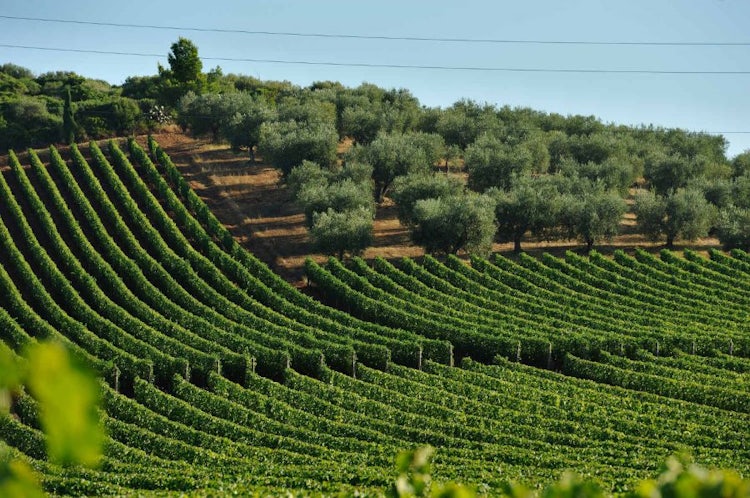
Capalbio D.O.C.
Designated as DOC in 1999, these wines are produced from grapes that extend along the territory from the Tyrrhenian coast to the town of Capalbio, all of which boast the ideal Mediterranean climate.
Capalbio red, rosè and red reserve: With a min of 50% Sangiovese, and remaining amount is a mix of red grapes from designated vineyards except Aleatico grape. Note that the Riserva includes aging for at least two years (six months minimum in wooden barrels)
Capalbio White & Vin Santo: Here you will find the Tuscan Trebbiano ( min. 50%) combined with white grapes from local vineyards )except Moscato bianco.) The result is a straw-yellow color, with a delicate, fruity & fresh flavor where as the typical Tuscan dessert wine, vin santo, is a golden yellow color, almost amber, with an ethereal smell, velvety harmonic, and well rounded flavor
Capalbio Vermentino: Contains at least l’85% vermentino grapes and the remaining amounts are local white grapes - except Moscato bianco. It is characterized by a straw-yellow color with greenish reflections, and boasts a delicate and fruity scent, with a savory dry flavor
Capalbio Sangiovese: This requires a minimum 85% Sangiovese and has a ruby red color, with the perfume of red berries. The flavor is warm, dry, moderately tannic, full bodied and harmonious.
Capalbio Cabernet Sauvignon: With a min of 85% Cabernet Sauvignon, this wine has traditional spice that you find in Cabernet Sauvignon, with a dry taste, full tannic flavor
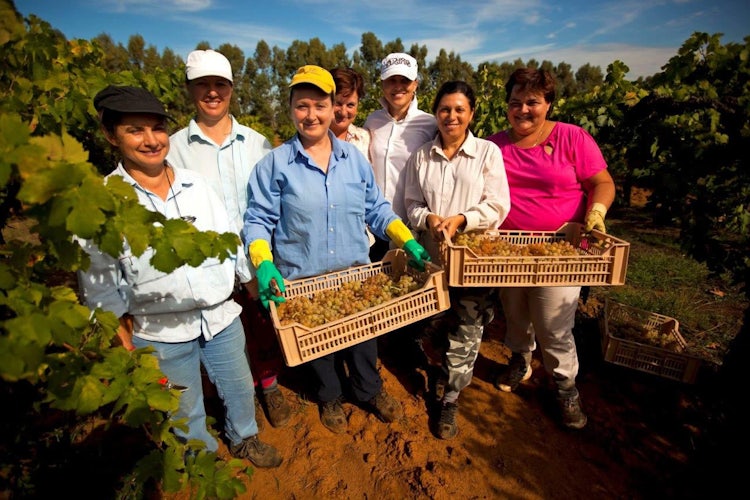
PARRINA D.O.C.
The production area is located in the territory of Orbetello in an area called "La Parrina", extending over 110 hectares. The small Parrina DOC is located entirely within the larger Ansonica Costa dell'Argentario DOC.
The name "Parrina" may originate from the Castilian word for a pergola on which vines or figs are grown. Others argue the area took its name from the Parrini order which had a monastery here in the twelfth century (although the existence of such an order is hard to substantiate).
Parrina Rosso & Riserva: 70% Sangiovese grapes and the rest from other non-aromatic black berry grapes. It has a ruby red color, the smell is delicate, pleasing, aromatic, velvety, dry whereas the Riserva tends to garnet, with an intense perfume, full and complex bouquet, dry, austere and remarkable flavor
Parrina Rosato: 70% Sangiovese grapes. You will find it has a brilliant pink color, a delicate odor with elegant features, the taste is dry and round, fresh and harmonious.
Parrina Bianco & Vin Santo: Much like the Bianco Pitigliano, this is a complex mix of Trebbiano Toscano (10- 30%), Ansonica (30-50%), Vermentino (20-40%), and no more than 20% Chardonnay and Sauvignon. Normally It has a slightly golden straw-yellow color. The perfume is fragrant and persistent while the flavor is velvety dry with a slightly bitter aftertaste. The vin santo varies from golden yellow to amber and the perfume is ethereal and intense.
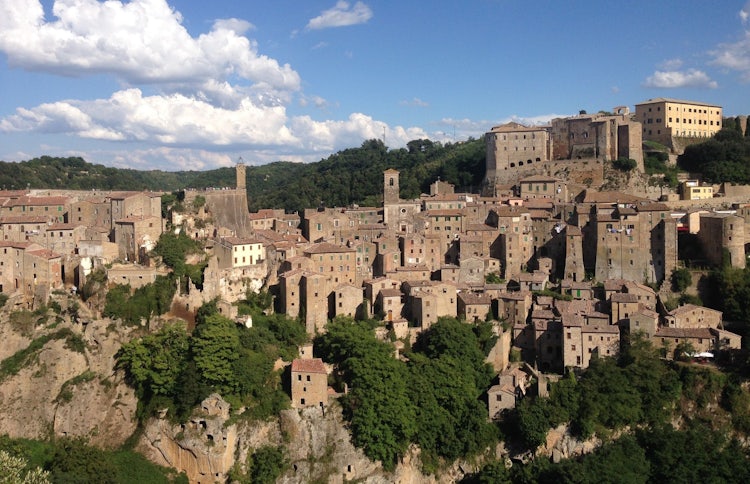
Sovana D.O.C.
The appellation Sovana DOC is focused on wines produced with the grape varieties Sangiovese, Aleatico, Cabernet Sauvignon, Ciliegiolo - a local grape, and Merlot. Just a few of the combinations allowed in the denomination include: Rosso, Rosso Riserva, Rosso Superiore e Rosato as well as mono-varietal DOC wines, made from the grapes of Aleatico, Sangiovese, Cabernet Sauvignon or Merlot.
Named after, Sovana, an antique Etruscan town, the territory for this wine encompasses approximately the same areas that produce the white wine Bianco di Pitigliano, including the towns of Pitigliano, Sorano, and Manciano.
Sovana Rosso, Rosso Superiore & Riserva wines are made of at least 50% Sangiovese grapes and the rest with local red berries.
Sovana Rosso: is ruby red with violet reflections and the flavor is harmonious and balanced.
Sovana Riserva: features an intense red color, tending to garnet. The perfume is fruity with hints of spices and the flavor is dry, full bodied and persistent
Sovana Rosso Superiore: you will find a ruby red color; the smell is fruity; the taste is warm, full bodied, dry, moderately tannic and slightly salty.
Sovana Rosato: characterized with a rose color and ruby tones, featuring a delicate flavor with intense fruity notes
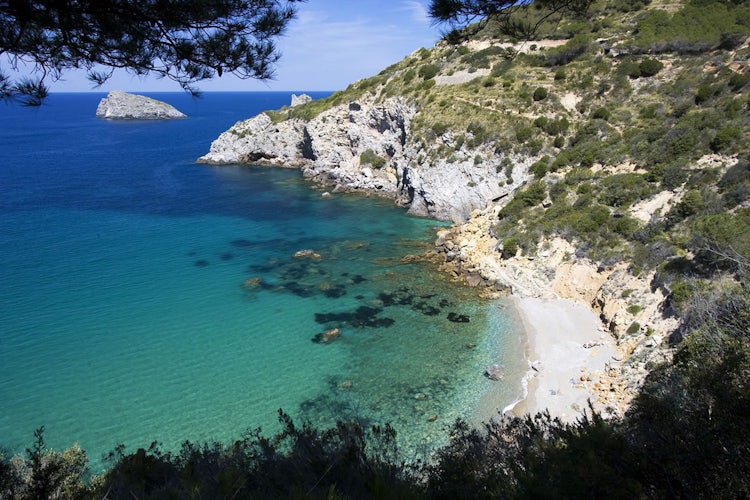
Ansonica Costa dell’Argentario D.O.C.
Ansonica is a light, dry wine produced in the vineyards of Maremma Tuscany, specifically in the area near Orbetello, Capalbio, Manciano and the Islands of Giglio and Elba which is often referred to as the “Silver Coast” or the Argentario. It was awarded the DOC in 1995, and allows for a minimum of 85% Ansonica and a 15% maximum of other white grapes in the blend. The color is straw-yellow, while the fragrance is slightly fruited and the flavor is dry, soft, lively and harmonic.
The ansonica is a vigorous grape variety with medium sized berries of yellow-green color. Because of the robust constitution of the plant and the organoleptic qualities of the grape, it can only be found in southern Tuscany and in western Sicily, where it is called Inzolia. Nevertheless, the Tuscan and Sicilian Ansonica wines taste quite different.

Maremmana & Buttero
An area of Tuscany characterized by a rather harsh if not enchanting landscape; a mix of dry, arid areas, soft rolling hills and low valleys once plagued with malaria. The cattle that graze this land need to be hardy and resistant, as do the cowboys that herd them.
Maremmana, is the cattle of choice in this region since it adapts well to difficult environments and prefers to roam freely, contributing to their especially flavorful and wholesome meat. These picturesque animals (both males and females) have wide horns, reaching sometimes up to 100cm each! The males horns resemble a half moon, whereas the female can be identified by their lyre shaped horns
Buttero or Butteri (plural) are honored on the first Sunday of August where you can still watch as they gather and brand cattle, showing off their skills in the field. It is still possible to ride with the butteri as they check their cattle in the Parco Regionale della Maremma (Maremma regional park). The traditional dress includes; coarse cotton pants, leggings, a velvet jacket, a black hat, a large mantle called the pastràno and you will often see them with a mazzarella or long stick for herding oxen and horses.
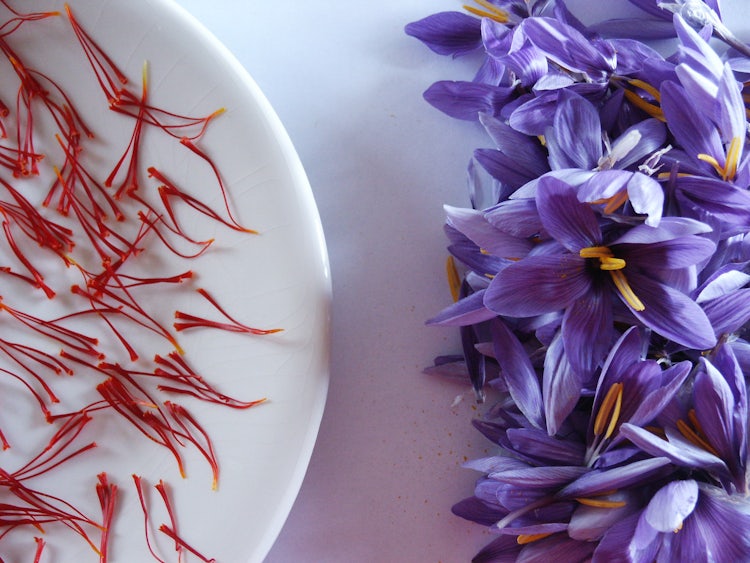
Saffron from Maremma
It has been documented that the Maremma Saffron was produced as far back as the medieval times - if not further . The spice was harvested and used mainly for the dyeing of fabrics, in fact color traces were found in the Roman bath tubs located in Pieve Vecchia in Campagnatico! The harvest period is very tight, lasting only a few days in October/November and for the best results the flowers are harvested by hand at dawn! Did you know for just 0.10 grams of saffron, you need to harvest and dry up to 150 to 200 flowers?
If you have never tasted real saffron (zaffarono) then here is your chance|In mid August, at Marsiliana d'Albegna, a village in Tuscany about 40 km from Grosseto and 18 km from Manciano, you will find the annual Sagra dello Zafferano.

Marruca Honey
The Marruca (Paliurus Spina Christi) is a thorny shrub, commonly found in the Maremma hills, blooming from May to June. The branches of this plant are particularly prickly and were used as fences around the pastures.
The legend tells us that the crown of thorns, placed on the head of Christ during the crucifixion, was made from this plant.
The unifloral honey extracted from this plant has an amber red color and a vaguely caramelized flavor with slightly bitter aftertaste and is particularly indicated as an anti-inflammatory for the stomach. It is a perfect complement to the cheeses from the Maremma area.

